一、AES算法
AES (Advanced Encryption Standard) 是一种对称加密算法,是目前被广泛使用的数据加密标准之一。该算法旨在取代DES (Data Encryption Standard) 算法。AES最初由比利时密码学家 Joan Daemen 和 Vincent Rijmen 提出,经过多年的演化、改进和公开评估,于2001年被美国国家标准技术研究所 (NIST) 正式采纳并公布,其密钥长度为128、192或256位,分别对应 AES-128、AES-192 和 AES-256。该算法的安全性和性能被广泛认可,已经成为密码学中最受信任和最常用的加密算法之一。
二、效果预览

三、源码分享
aesEncryption.h
#ifndef QAESENCRYPTION_H
#define QAESENCRYPTION_H
#ifdef QtAES_EXPORTS
#include "qtaes_export.h"
#else
#define QTAESSHARED_EXPORT
#endif
#include <QObject>
#include <QByteArray>
#ifdef __linux__
#ifndef __LP64__
#define do_rdtsc _do_rdtsc
#endif
#endif
class QTAESSHARED_EXPORT AESEncryption : public QObject
{
Q_OBJECT
public:
enum Aes {
AES_128,
AES_192,
AES_256
};
enum Mode {
ECB,
CBC,
CFB,
OFB
};
enum Padding {
ZERO,
PKCS7,
ISO
};
/*!
* \brief static method call to encrypt data given by rawText
* \param level: AES::Aes level
* \param mode: AES::Mode mode
* \param rawText: input text
* \param key: user-key (key.size either 128, 192, 256 bits depending on AES::Aes)
* \param iv: initialisation-vector (iv.size is 128 bits (16 Bytes))
* \param padding: AES::Padding standard
* \return encrypted cipher
*/
static QByteArray Crypt(AESEncryption::Aes level, AESEncryption::Mode mode, const QByteArray &rawText, const QByteArray &key,
const QByteArray &iv = QByteArray(), AESEncryption::Padding padding = AESEncryption::ISO);
/*!
* \brief static method call to decrypt data given by rawText
* \param level: AES::Aes level
* \param mode: AES::Mode mode
* \param rawText: input text
* \param key: user-key (key.size either 128, 192, 256 bits depending on AES::Aes)
* \param iv: initialisation-vector (iv.size is 128 bits (16 Bytes))
* \param padding: AES::Padding standard
* \return decrypted cipher with padding
*/
static QByteArray Decrypt(AESEncryption::Aes level, AESEncryption::Mode mode, const QByteArray &rawText, const QByteArray &key,
const QByteArray &iv = QByteArray(), AESEncryption::Padding padding = AESEncryption::ISO);
/*!
* \brief static method call to expand the user key to fit the encrypting/decrypting algorithm
* \param level: AES::Aes level
* \param mode: AES::Mode mode
* \param key: user-key (key.size either 128, 192, 256 bits depending on AES::Aes)
* \param expKey: output expanded key
* \param isEncryptionKey: always 'true' || only 'false' when DECRYPTING in CBC or EBC mode with aesni (check if supported)
* \return AES-ready key
*/
static QByteArray ExpandKey(AESEncryption::Aes level, AESEncryption::Mode mode, const QByteArray &key, bool isEncryptionKey);
/*!
* \brief static method call to remove padding from decrypted cipher given by rawText
* \param rawText: inputText
* \param padding: AES::Padding standard
* \return decrypted cipher with padding removed
*/
static QByteArray RemovePadding(const QByteArray &rawText, AESEncryption::Padding padding = AESEncryption::ISO);
AESEncryption(AESEncryption::Aes level, AESEncryption::Mode mode,
AESEncryption::Padding padding = AESEncryption::ISO);
/*!
* \brief object method call to encrypt data given by rawText
* \param rawText: input text
* \param key: user-key (key.size either 128, 192, 256 bits depending on AES::Aes)
* \param iv: initialisation-vector (iv.size is 128 bits (16 Bytes))
* \return encrypted cipher
*/
QByteArray encode(const QByteArray &rawText, const QByteArray &key, const QByteArray &iv = QByteArray());
/*!
* \brief object method call to decrypt data given by rawText
* \param rawText: input text
* \param key: user-key (key.size either 128, 192, 256 bits depending on AES::Aes)
* \param iv: initialisation-vector (iv.size is 128 bits (16 Bytes))
* \param padding: AES::Padding standard
* \return decrypted cipher with padding
*/
QByteArray decode(const QByteArray &rawText, const QByteArray &key, const QByteArray &iv = QByteArray());
/*!
* \brief object method call to expand the user key to fit the encrypting/decrypting algorithm
* \param key: user-key (key.size either 128, 192, 256 bits depending on AES::Aes)
* \param isEncryptionKey: always 'true' || only 'false' when DECRYPTING in CBC or EBC mode with aesni (check if supported)
* \return AES-ready key
*/
QByteArray expandKey(const QByteArray &key, bool isEncryptionKey);
/*!
* \brief object method call to remove padding from decrypted cipher given by rawText
* \param rawText: inputText
* \return decrypted cipher with padding removed
*/
QByteArray removePadding(const QByteArray &rawText);
QByteArray printArray(uchar *arr, int size);
Q_SIGNALS:
public Q_SLOTS:
private:
int m_nb;
int m_blocklen;
int m_level;
int m_mode;
int m_nk;
int m_keyLen;
int m_nr;
int m_expandedKey;
int m_padding;
bool m_aesNIAvailable;
QByteArray* m_state;
struct AES256{
int nk = 8;
int keylen = 32;
int nr = 14;
int expandedKey = 240;
int userKeySize = 256;
};
struct AES192{
int nk = 6;
int keylen = 24;
int nr = 12;
int expandedKey = 209;
int userKeySize = 192;
};
struct AES128{
int nk = 4;
int keylen = 16;
int nr = 10;
int expandedKey = 176;
int userKeySize = 128;
};
quint8 getSBoxValue(quint8 num){return sbox[num];}
quint8 getSBoxInvert(quint8 num){return rsbox[num];}
void addRoundKey(const quint8 round, const QByteArray &expKey);
void subBytes();
void shiftRows();
void mixColumns();
void invMixColumns();
void invSubBytes();
void invShiftRows();
QByteArray getPadding(int currSize, int alignment);
QByteArray cipher(const QByteArray &expKey, const QByteArray &in);
QByteArray invCipher(const QByteArray &expKey, const QByteArray &in);
QByteArray byteXor(const QByteArray &a, const QByteArray &b);
const quint8 sbox[256] = {
//0 1 2 3 4 5 6 7 8 9 A B C D E F
0x63, 0x7c, 0x77, 0x7b, 0xf2, 0x6b, 0x6f, 0xc5, 0x30, 0x01, 0x67, 0x2b, 0xfe, 0xd7, 0xab, 0x76,
0xca, 0x82, 0xc9, 0x7d, 0xfa, 0x59, 0x47, 0xf0, 0xad, 0xd4, 0xa2, 0xaf, 0x9c, 0xa4, 0x72, 0xc0,
0xb7, 0xfd, 0x93, 0x26, 0x36, 0x3f, 0xf7, 0xcc, 0x34, 0xa5, 0xe5, 0xf1, 0x71, 0xd8, 0x31, 0x15,
0x04, 0xc7, 0x23, 0xc3, 0x18, 0x96, 0x05, 0x9a, 0x07, 0x12, 0x80, 0xe2, 0xeb, 0x27, 0xb2, 0x75,
0x09, 0x83, 0x2c, 0x1a, 0x1b, 0x6e, 0x5a, 0xa0, 0x52, 0x3b, 0xd6, 0xb3, 0x29, 0xe3, 0x2f, 0x84,
0x53, 0xd1, 0x00, 0xed, 0x20, 0xfc, 0xb1, 0x5b, 0x6a, 0xcb, 0xbe, 0x39, 0x4a, 0x4c, 0x58, 0xcf,
0xd0, 0xef, 0xaa, 0xfb, 0x43, 0x4d, 0x33, 0x85, 0x45, 0xf9, 0x02, 0x7f, 0x50, 0x3c, 0x9f, 0xa8,
0x51, 0xa3, 0x40, 0x8f, 0x92, 0x9d, 0x38, 0xf5, 0xbc, 0xb6, 0xda, 0x21, 0x10, 0xff, 0xf3, 0xd2,
0xcd, 0x0c, 0x13, 0xec, 0x5f, 0x97, 0x44, 0x17, 0xc4, 0xa7, 0x7e, 0x3d, 0x64, 0x5d, 0x19, 0x73,
0x60, 0x81, 0x4f, 0xdc, 0x22, 0x2a, 0x90, 0x88, 0x46, 0xee, 0xb8, 0x14, 0xde, 0x5e, 0x0b, 0xdb,
0xe0, 0x32, 0x3a, 0x0a, 0x49, 0x06, 0x24, 0x5c, 0xc2, 0xd3, 0xac, 0x62, 0x91, 0x95, 0xe4, 0x79,
0xe7, 0xc8, 0x37, 0x6d, 0x8d, 0xd5, 0x4e, 0xa9, 0x6c, 0x56, 0xf4, 0xea, 0x65, 0x7a, 0xae, 0x08,
0xba, 0x78, 0x25, 0x2e, 0x1c, 0xa6, 0xb4, 0xc6, 0xe8, 0xdd, 0x74, 0x1f, 0x4b, 0xbd, 0x8b, 0x8a,
0x70, 0x3e, 0xb5, 0x66, 0x48, 0x03, 0xf6, 0x0e, 0x61, 0x35, 0x57, 0xb9, 0x86, 0xc1, 0x1d, 0x9e,
0xe1, 0xf8, 0x98, 0x11, 0x69, 0xd9, 0x8e, 0x94, 0x9b, 0x1e, 0x87, 0xe9, 0xce, 0x55, 0x28, 0xdf,
0x8c, 0xa1, 0x89, 0x0d, 0xbf, 0xe6, 0x42, 0x68, 0x41, 0x99, 0x2d, 0x0f, 0xb0, 0x54, 0xbb, 0x16 };
const quint8 rsbox[256] = {
0x52, 0x09, 0x6a, 0xd5, 0x30, 0x36, 0xa5, 0x38, 0xbf, 0x40, 0xa3, 0x9e, 0x81, 0xf3, 0xd7, 0xfb,
0x7c, 0xe3, 0x39, 0x82, 0x9b, 0x2f, 0xff, 0x87, 0x34, 0x8e, 0x43, 0x44, 0xc4, 0xde, 0xe9, 0xcb,
0x54, 0x7b, 0x94, 0x32, 0xa6, 0xc2, 0x23, 0x3d, 0xee, 0x4c, 0x95, 0x0b, 0x42, 0xfa, 0xc3, 0x4e,
0x08, 0x2e, 0xa1, 0x66, 0x28, 0xd9, 0x24, 0xb2, 0x76, 0x5b, 0xa2, 0x49, 0x6d, 0x8b, 0xd1, 0x25,
0x72, 0xf8, 0xf6, 0x64, 0x86, 0x68, 0x98, 0x16, 0xd4, 0xa4, 0x5c, 0xcc, 0x5d, 0x65, 0xb6, 0x92,
0x6c, 0x70, 0x48, 0x50, 0xfd, 0xed, 0xb9, 0xda, 0x5e, 0x15, 0x46, 0x57, 0xa7, 0x8d, 0x9d, 0x84,
0x90, 0xd8, 0xab, 0x00, 0x8c, 0xbc, 0xd3, 0x0a, 0xf7, 0xe4, 0x58, 0x05, 0xb8, 0xb3, 0x45, 0x06,
0xd0, 0x2c, 0x1e, 0x8f, 0xca, 0x3f, 0x0f, 0x02, 0xc1, 0xaf, 0xbd, 0x03, 0x01, 0x13, 0x8a, 0x6b,
0x3a, 0x91, 0x11, 0x41, 0x4f, 0x67, 0xdc, 0xea, 0x97, 0xf2, 0xcf, 0xce, 0xf0, 0xb4, 0xe6, 0x73,
0x96, 0xac, 0x74, 0x22, 0xe7, 0xad, 0x35, 0x85, 0xe2, 0xf9, 0x37, 0xe8, 0x1c, 0x75, 0xdf, 0x6e,
0x47, 0xf1, 0x1a, 0x71, 0x1d, 0x29, 0xc5, 0x89, 0x6f, 0xb7, 0x62, 0x0e, 0xaa, 0x18, 0xbe, 0x1b,
0xfc, 0x56, 0x3e, 0x4b, 0xc6, 0xd2, 0x79, 0x20, 0x9a, 0xdb, 0xc0, 0xfe, 0x78, 0xcd, 0x5a, 0xf4,
0x1f, 0xdd, 0xa8, 0x33, 0x88, 0x07, 0xc7, 0x31, 0xb1, 0x12, 0x10, 0x59, 0x27, 0x80, 0xec, 0x5f,
0x60, 0x51, 0x7f, 0xa9, 0x19, 0xb5, 0x4a, 0x0d, 0x2d, 0xe5, 0x7a, 0x9f, 0x93, 0xc9, 0x9c, 0xef,
0xa0, 0xe0, 0x3b, 0x4d, 0xae, 0x2a, 0xf5, 0xb0, 0xc8, 0xeb, 0xbb, 0x3c, 0x83, 0x53, 0x99, 0x61,
0x17, 0x2b, 0x04, 0x7e, 0xba, 0x77, 0xd6, 0x26, 0xe1, 0x69, 0x14, 0x63, 0x55, 0x21, 0x0c, 0x7d };
// The round constant word array, Rcon[i], contains the values given by
// x to th e power (i-1) being powers of x (x is denoted as {02}) in the field GF(2^8)
// Only the first 14 elements are needed
const quint8 Rcon[14] = {
0x8d, 0x01, 0x02, 0x04, 0x08, 0x10, 0x20, 0x40, 0x80, 0x1b, 0x36, 0x6c, 0xd8, 0xab};
};
#endif // QAESENCRYPTION_H
aesEncryption.cpp
#include "aesEncryption.h"
QByteArray AESEncryption::Crypt(AESEncryption::Aes level, AESEncryption::Mode mode, const QByteArray &rawText,
const QByteArray &key, const QByteArray &iv, AESEncryption::Padding padding)
{
return AESEncryption(level, mode, padding).encode(rawText, key, iv);
}
QByteArray AESEncryption::Decrypt(AESEncryption::Aes level, AESEncryption::Mode mode, const QByteArray &rawText,
const QByteArray &key, const QByteArray &iv, AESEncryption::Padding padding)
{
return AESEncryption(level, mode, padding).decode(rawText, key, iv);
}
QByteArray AESEncryption::ExpandKey(AESEncryption::Aes level, AESEncryption::Mode mode, const QByteArray &key, bool isEncryptionKey)
{
return AESEncryption(level, mode).expandKey(key, isEncryptionKey);
}
QByteArray AESEncryption::RemovePadding(const QByteArray &rawText, AESEncryption::Padding padding)
{
if (rawText.isEmpty())
return rawText;
QByteArray ret(rawText);
switch (padding)
{
case Padding::ZERO:
//Works only if the last byte of the decoded array is not zero
while (ret.at(ret.length()-1) == 0x00)
ret.remove(ret.length()-1, 1);
break;
case Padding::PKCS7:
#if QT_VERSION >= QT_VERSION_CHECK(5, 10, 0)
ret.remove(ret.length() - ret.back(), ret.back());
#else
ret.remove(ret.length() - ret.at(ret.length() - 1), ret.at(ret.length() - 1));
#endif
break;
case Padding::ISO:
{
// Find the last byte which is not zero
int marker_index = ret.length() - 1;
for (; marker_index >= 0; --marker_index)
{
if (ret.at(marker_index) != 0x00)
{
break;
}
}
// And check if it's the byte for marking padding
if (ret.at(marker_index) == '\x80')
{
ret.truncate(marker_index);
}
break;
}
default:
//do nothing
break;
}
return ret;
}
/*
* End Static function declarations
* */
/*
* Local Functions
* */
namespace {
quint8 xTime(quint8 x)
{
return ((x<<1) ^ (((x>>7) & 1) * 0x1b));
}
quint8 multiply(quint8 x, quint8 y)
{
return (((y & 1) * x) ^ ((y>>1 & 1) * xTime(x)) ^ ((y>>2 & 1) * xTime(xTime(x))) ^ ((y>>3 & 1)
* xTime(xTime(xTime(x)))) ^ ((y>>4 & 1) * xTime(xTime(xTime(xTime(x))))));
}
}
/*
* End Local functions
* */
AESEncryption::AESEncryption(Aes level, Mode mode,
Padding padding)
: m_nb(4), m_blocklen(16), m_level(level), m_mode(mode), m_padding(padding)
, m_aesNIAvailable(false), m_state(nullptr)
{
switch (level)
{
case AES_128: {
AES128 aes;
m_nk = aes.nk;
m_keyLen = aes.keylen;
m_nr = aes.nr;
m_expandedKey = aes.expandedKey;
}
break;
case AES_192: {
AES192 aes;
m_nk = aes.nk;
m_keyLen = aes.keylen;
m_nr = aes.nr;
m_expandedKey = aes.expandedKey;
}
break;
case AES_256: {
AES256 aes;
m_nk = aes.nk;
m_keyLen = aes.keylen;
m_nr = aes.nr;
m_expandedKey = aes.expandedKey;
}
break;
default: {
AES128 aes;
m_nk = aes.nk;
m_keyLen = aes.keylen;
m_nr = aes.nr;
m_expandedKey = aes.expandedKey;
}
break;
}
}
QByteArray AESEncryption::getPadding(int currSize, int alignment)
{
int size = (alignment - currSize % alignment) % alignment;
switch(m_padding)
{
case Padding::ZERO:
return QByteArray(size, 0x00);
break;
case Padding::PKCS7:
if (size == 0)
size = alignment;
return QByteArray(size, size);
break;
case Padding::ISO:
if (size > 0)
return QByteArray (size - 1, 0x00).prepend('\x80');
break;
default:
return QByteArray(size, 0x00);
break;
}
return QByteArray();
}
QByteArray AESEncryption::expandKey(const QByteArray &key, bool isEncryptionKey)
{
Q_UNUSED(isEncryptionKey)
int i, k;
quint8 tempa[4]; // Used for the column/row operations
QByteArray roundKey(key); // The first round key is the key itself.
// All other round keys are found from the previous round keys.
//i == Nk
for(i = m_nk; i < m_nb * (m_nr + 1); i++)
{
tempa[0] = (quint8) roundKey.at((i-1) * 4 + 0);
tempa[1] = (quint8) roundKey.at((i-1) * 4 + 1);
tempa[2] = (quint8) roundKey.at((i-1) * 4 + 2);
tempa[3] = (quint8) roundKey.at((i-1) * 4 + 3);
if (i % m_nk == 0)
{
// This function shifts the 4 bytes in a word to the left once.
// [a0,a1,a2,a3] becomes [a1,a2,a3,a0]
// Function RotWord()
k = tempa[0];
tempa[0] = tempa[1];
tempa[1] = tempa[2];
tempa[2] = tempa[3];
tempa[3] = k;
// Function Subword()
tempa[0] = getSBoxValue(tempa[0]);
tempa[1] = getSBoxValue(tempa[1]);
tempa[2] = getSBoxValue(tempa[2]);
tempa[3] = getSBoxValue(tempa[3]);
tempa[0] = tempa[0] ^ Rcon[i/m_nk];
}
if (m_level == AES_256 && i % m_nk == 4)
{
// Function Subword()
tempa[0] = getSBoxValue(tempa[0]);
tempa[1] = getSBoxValue(tempa[1]);
tempa[2] = getSBoxValue(tempa[2]);
tempa[3] = getSBoxValue(tempa[3]);
}
roundKey.insert(i * 4 + 0, (quint8) roundKey.at((i - m_nk) * 4 + 0) ^ tempa[0]);
roundKey.insert(i * 4 + 1, (quint8) roundKey.at((i - m_nk) * 4 + 1) ^ tempa[1]);
roundKey.insert(i * 4 + 2, (quint8) roundKey.at((i - m_nk) * 4 + 2) ^ tempa[2]);
roundKey.insert(i * 4 + 3, (quint8) roundKey.at((i - m_nk) * 4 + 3) ^ tempa[3]);
}
return roundKey;
}
// This function adds the round key to state.
// The round key is added to the state by an XOR function.
void AESEncryption::addRoundKey(const quint8 round, const QByteArray &expKey)
{
QByteArray::iterator it = m_state->begin();
for(int i=0; i < 16; ++i)
it[i] = (quint8) it[i] ^ (quint8) expKey.at(round * m_nb * 4 + (i/4) * m_nb + (i%4));
}
// The SubBytes Function Substitutes the values in the
// state matrix with values in an S-box.
void AESEncryption::subBytes()
{
QByteArray::iterator it = m_state->begin();
for(int i = 0; i < 16; i++)
it[i] = getSBoxValue((quint8) it[i]);
}
// The ShiftRows() function shifts the rows in the state to the left.
// Each row is shifted with different offset.
// Offset = Row number. So the first row is not shifted.
void AESEncryption::shiftRows()
{
QByteArray::iterator it = m_state->begin();
quint8 temp;
//Keep in mind that QByteArray is column-driven!!
//Shift 1 to left
temp = (quint8)it[1];
it[1] = (quint8)it[5];
it[5] = (quint8)it[9];
it[9] = (quint8)it[13];
it[13] = (quint8)temp;
//Shift 2 to left
temp = (quint8)it[2];
it[2] = (quint8)it[10];
it[10] = (quint8)temp;
temp = (quint8)it[6];
it[6] = (quint8)it[14];
it[14] = (quint8)temp;
//Shift 3 to left
temp = (quint8)it[3];
it[3] = (quint8)it[15];
it[15] = (quint8)it[11];
it[11] = (quint8)it[7];
it[7] = (quint8)temp;
}
// MixColumns function mixes the columns of the state matrix
//optimized!!
void AESEncryption::mixColumns()
{
QByteArray::iterator it = m_state->begin();
quint8 tmp, tm, t;
for(int i = 0; i < 16; i += 4){
t = (quint8)it[i];
tmp = (quint8)it[i] ^ (quint8)it[i+1] ^ (quint8)it[i+2] ^ (quint8)it[i+3] ;
tm = xTime( (quint8)it[i] ^ (quint8)it[i+1] );
it[i] = (quint8)it[i] ^ (quint8)tm ^ (quint8)tmp;
tm = xTime( (quint8)it[i+1] ^ (quint8)it[i+2]);
it[i+1] = (quint8)it[i+1] ^ (quint8)tm ^ (quint8)tmp;
tm = xTime( (quint8)it[i+2] ^ (quint8)it[i+3]);
it[i+2] =(quint8)it[i+2] ^ (quint8)tm ^ (quint8)tmp;
tm = xTime((quint8)it[i+3] ^ (quint8)t);
it[i+3] =(quint8)it[i+3] ^ (quint8)tm ^ (quint8)tmp;
}
}
// MixColumns function mixes the columns of the state matrix.
// The method used to multiply may be difficult to understand for the inexperienced.
// Please use the references to gain more information.
void AESEncryption::invMixColumns()
{
QByteArray::iterator it = m_state->begin();
quint8 a,b,c,d;
for(int i = 0; i < 16; i+=4){
a = (quint8) it[i];
b = (quint8) it[i+1];
c = (quint8) it[i+2];
d = (quint8) it[i+3];
it[i] = (quint8) (multiply(a, 0x0e) ^ multiply(b, 0x0b) ^ multiply(c, 0x0d) ^ multiply(d, 0x09));
it[i+1] = (quint8) (multiply(a, 0x09) ^ multiply(b, 0x0e) ^ multiply(c, 0x0b) ^ multiply(d, 0x0d));
it[i+2] = (quint8) (multiply(a, 0x0d) ^ multiply(b, 0x09) ^ multiply(c, 0x0e) ^ multiply(d, 0x0b));
it[i+3] = (quint8) (multiply(a, 0x0b) ^ multiply(b, 0x0d) ^ multiply(c, 0x09) ^ multiply(d, 0x0e));
}
}
// The SubBytes Function Substitutes the values in the
// state matrix with values in an S-box.
void AESEncryption::invSubBytes()
{
QByteArray::iterator it = m_state->begin();
for(int i = 0; i < 16; ++i)
it[i] = getSBoxInvert((quint8) it[i]);
}
void AESEncryption::invShiftRows()
{
QByteArray::iterator it = m_state->begin();
uint8_t temp;
//Keep in mind that QByteArray is column-driven!!
//Shift 1 to right
temp = (quint8)it[13];
it[13] = (quint8)it[9];
it[9] = (quint8)it[5];
it[5] = (quint8)it[1];
it[1] = (quint8)temp;
//Shift 2
temp = (quint8)it[10];
it[10] = (quint8)it[2];
it[2] = (quint8)temp;
temp = (quint8)it[14];
it[14] = (quint8)it[6];
it[6] = (quint8)temp;
//Shift 3
temp = (quint8)it[7];
it[7] = (quint8)it[11];
it[11] = (quint8)it[15];
it[15] = (quint8)it[3];
it[3] = (quint8)temp;
}
QByteArray AESEncryption::byteXor(const QByteArray &a, const QByteArray &b)
{
QByteArray::const_iterator it_a = a.begin();
QByteArray::const_iterator it_b = b.begin();
QByteArray ret;
//for(int i = 0; i < m_blocklen; i++)
for(int i = 0; i < std::min(a.size(), b.size()); i++)
ret.insert(i,it_a[i] ^ it_b[i]);
return ret;
}
// Cipher is the main function that encrypts the PlainText.
QByteArray AESEncryption::cipher(const QByteArray &expKey, const QByteArray &in)
{
//m_state is the input buffer...
QByteArray output(in);
m_state = &output;
// Add the First round key to the state before starting the rounds.
addRoundKey(0, expKey);
// There will be Nr rounds.
// The first Nr-1 rounds are identical.
// These Nr-1 rounds are executed in the loop below.
for(quint8 round = 1; round < m_nr; ++round){
subBytes();
shiftRows();
mixColumns();
addRoundKey(round, expKey);
}
// The last round is given below.
// The MixColumns function is not here in the last round.
subBytes();
shiftRows();
addRoundKey(m_nr, expKey);
return output;
}
QByteArray AESEncryption::invCipher(const QByteArray &expKey, const QByteArray &in)
{
//m_state is the input buffer.... handle it!
QByteArray output(in);
m_state = &output;
// Add the First round key to the state before starting the rounds.
addRoundKey(m_nr, expKey);
// There will be Nr rounds.
// The first Nr-1 rounds are identical.
// These Nr-1 rounds are executed in the loop below.
for(quint8 round=m_nr-1; round>0 ; round--){
invShiftRows();
invSubBytes();
addRoundKey(round, expKey);
invMixColumns();
}
// The last round is given below.
// The MixColumns function is not here in the last round.
invShiftRows();
invSubBytes();
addRoundKey(0, expKey);
return output;
}
QByteArray AESEncryption::printArray(uchar* arr, int size)
{
QByteArray print("");
for(int i=0; i<size; i++)
print.append(arr[i]);
return print.toHex();
}
QByteArray AESEncryption::encode(const QByteArray &rawText, const QByteArray &key, const QByteArray &iv)
{
if ((m_mode >= CBC && (iv.isEmpty() || iv.size() != m_blocklen)) || key.size() != m_keyLen)
return QByteArray();
QByteArray expandedKey = expandKey(key, true);
QByteArray alignedText(rawText);
//Fill array with padding
alignedText.append(getPadding(rawText.size(), m_blocklen));
switch(m_mode)
{
case ECB: {
QByteArray ret;
for(int i=0; i < alignedText.size(); i+= m_blocklen)
ret.append(cipher(expandedKey, alignedText.mid(i, m_blocklen)));
return ret;
}
break;
case CBC: {
QByteArray ret;
QByteArray ivTemp(iv);
for(int i=0; i < alignedText.size(); i+= m_blocklen) {
alignedText.replace(i, m_blocklen, byteXor(alignedText.mid(i, m_blocklen),ivTemp));
ret.append(cipher(expandedKey, alignedText.mid(i, m_blocklen)));
ivTemp = ret.mid(i, m_blocklen);
}
return ret;
}
break;
case CFB: {
QByteArray ret;
ret.append(byteXor(alignedText.left(m_blocklen), cipher(expandedKey, iv)));
for(int i=0; i < alignedText.size(); i+= m_blocklen) {
if (i+m_blocklen < alignedText.size())
ret.append(byteXor(alignedText.mid(i+m_blocklen, m_blocklen),
cipher(expandedKey, ret.mid(i, m_blocklen))));
}
return ret;
}
break;
case OFB: {
QByteArray ret;
QByteArray ofbTemp;
ofbTemp.append(cipher(expandedKey, iv));
for (int i=m_blocklen; i < alignedText.size(); i += m_blocklen){
ofbTemp.append(cipher(expandedKey, ofbTemp.right(m_blocklen)));
}
ret.append(byteXor(alignedText, ofbTemp));
return ret;
}
break;
default: break;
}
return QByteArray();
}
QByteArray AESEncryption::decode(const QByteArray &rawText, const QByteArray &key, const QByteArray &iv)
{
if ((m_mode >= CBC && (iv.isEmpty() || iv.size() != m_blocklen)) || key.size() != m_keyLen)
return QByteArray();
QByteArray ret;
QByteArray expandedKey;
expandedKey = expandKey(key, true);
//false or true here is very important
//the expandedKeys aren't the same for !aes-ni! ENcryption and DEcryption (only CBC and EBC)
//but if you are !NOT! using aes-ni then the expandedKeys for encryption and decryption are the SAME!!!
switch(m_mode)
{
case ECB:
for(int i=0; i < rawText.size(); i+= m_blocklen)
ret.append(invCipher(expandedKey, rawText.mid(i, m_blocklen)));
break;
case CBC:
{
QByteArray ivTemp(iv);
for(int i=0; i < rawText.size(); i+= m_blocklen){
ret.append(invCipher(expandedKey, rawText.mid(i, m_blocklen)));
ret.replace(i, m_blocklen, byteXor(ret.mid(i, m_blocklen),ivTemp));
ivTemp = rawText.mid(i, m_blocklen);
}
}
break;
case CFB: {
ret.append(byteXor(rawText.mid(0, m_blocklen), cipher(expandedKey, iv)));
for(int i=0; i < rawText.size(); i+= m_blocklen){
if (i+m_blocklen < rawText.size()) {
ret.append(byteXor(rawText.mid(i+m_blocklen, m_blocklen),
cipher(expandedKey, rawText.mid(i, m_blocklen))));
}
}
}
break;
case OFB: {
QByteArray ofbTemp;
ofbTemp.append(cipher(expandedKey, iv));
for (int i=m_blocklen; i < rawText.size(); i += m_blocklen){
ofbTemp.append(cipher(expandedKey, ofbTemp.right(m_blocklen)));
}
ret.append(byteXor(rawText, ofbTemp));
}
break;
default:
//do nothing
break;
}
return ret;
}
QByteArray AESEncryption::removePadding(const QByteArray &rawText)
{
return RemovePadding(rawText, (Padding) m_padding);
}
passwordHelper.h
#ifndef PASSWORDHELPER_H
#define PASSWORDHELPER_H
#include <QObject>
#include "aesEncryption.h"
class PasswordHelper : public QObject
{
Q_OBJECT
public:
explicit PasswordHelper(QObject *parent = nullptr);
static QString aesEncryption(const QString val,const QString key,const QString iv);
static QString aesDecryption(const QString val,const QString key,const QString iv);
};
#endif // PASSWORDHELPER_H
passwordHelper.cpp
#include "passwordHelper.h"
PasswordHelper::PasswordHelper(QObject *parent)
: QObject{parent}
{
}
QString PasswordHelper::aesEncryption(const QString val,const QString key,const QString iv)
{
AESEncryption encryption(AESEncryption::AES_128, AESEncryption::ECB, AESEncryption::PKCS7);
QByteArray enBA = encryption.encode(val.toUtf8(), key.toUtf8(),iv.toUtf8());
return QString::fromLatin1(enBA.toBase64()); //以便网络传输,或保存在 txt型文件中
}
QString PasswordHelper::aesDecryption(const QString val,const QString key,const QString iv)
{
AESEncryption encryption(AESEncryption::AES_128, AESEncryption::ECB, AESEncryption::PKCS7);
QByteArray enBA = QByteArray::fromBase64(val.toUtf8());
QByteArray deBA = encryption.decode(enBA, key.toUtf8(),iv.toUtf8());
return QString::fromLatin1(AESEncryption::RemovePadding(deBA, AESEncryption::PKCS7));
}
四、加解密使用方法
QString val = "123456789";
QString key = "1234567812345678";
QString iv = "1234567812345678";
void MainWindow::on_btnEncryption_clicked()
{
val = this->ui->lineEditEncrypt->text();
qDebug()<<"val = "<<val;
QString encrypt = PasswordHelper::aesEncryption(val,key,iv);
qDebug()<<"encrypt = "<<encrypt;
QString decryptr = PasswordHelper::aesDecryption(encrypt,key,iv);
qDebug()<<"decryptr = "<<decryptr;
this->ui->lineEditDecypt->setText(decryptr);
}
需要注意的是key和iv的长度要为16才行。
五、源码分享
点击下载
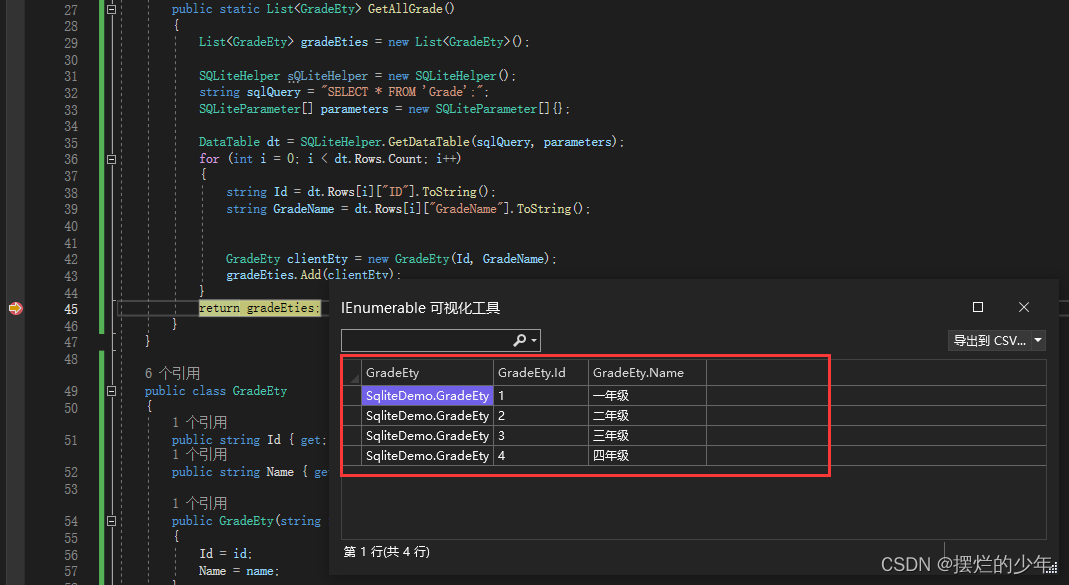
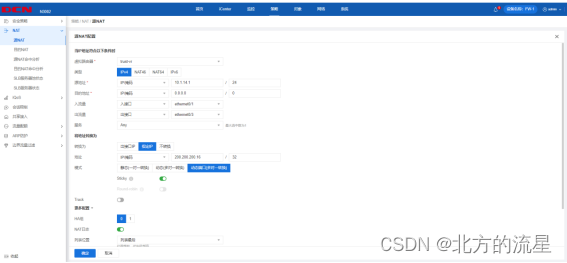
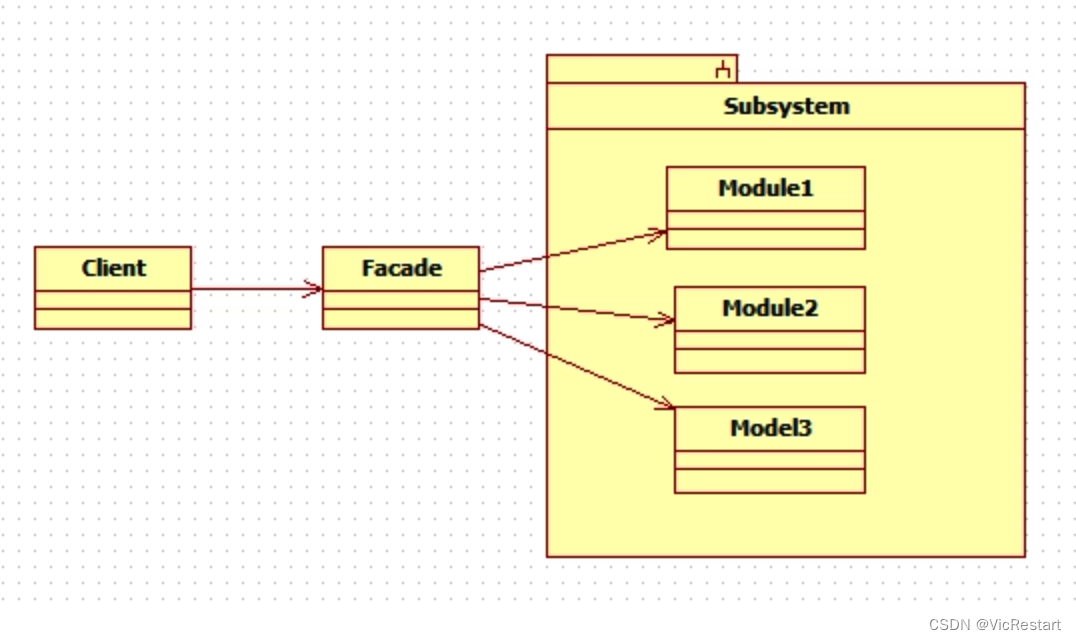

![2023年中国逆流式冷却塔性能特点、应用领域及市场规模分析[图]](https://img-blog.csdnimg.cn/img_convert/0727baba79ba5c8f417bd77b9dfa414c.png)
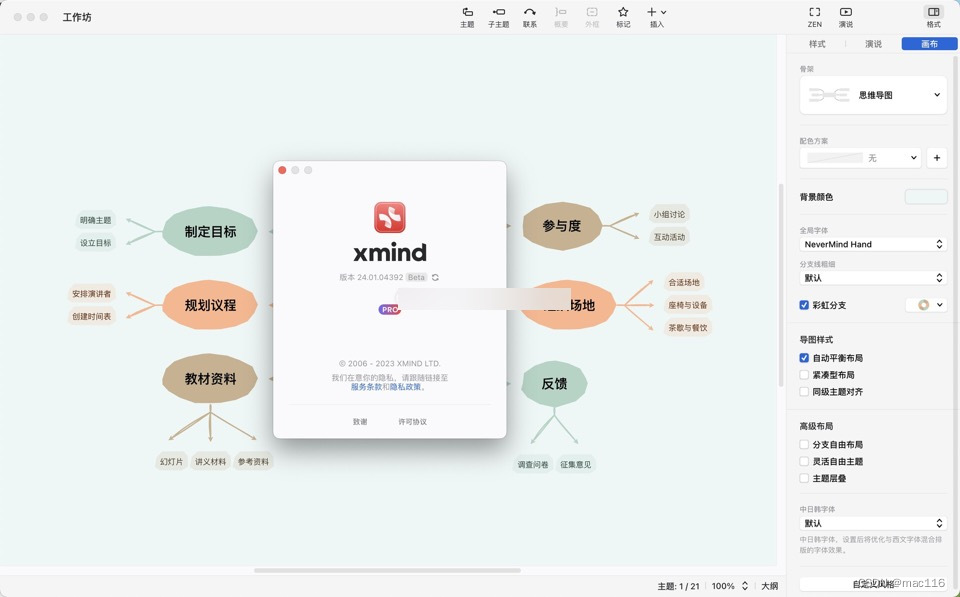




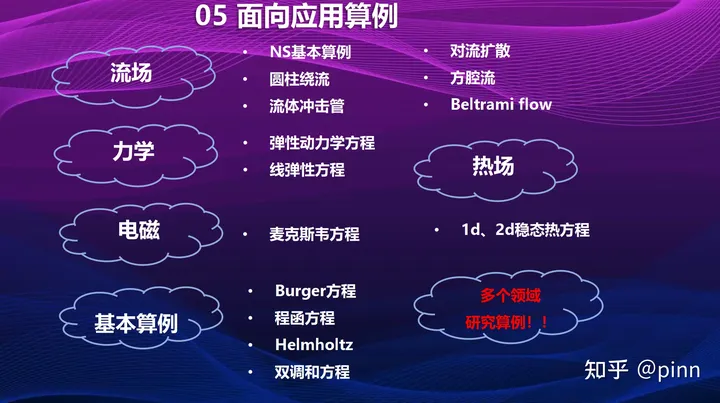

![[模版总结] - 树的基本算法2 - BST](https://img-blog.csdnimg.cn/0c39e784075b4782a7cd07451def10e5.png)






